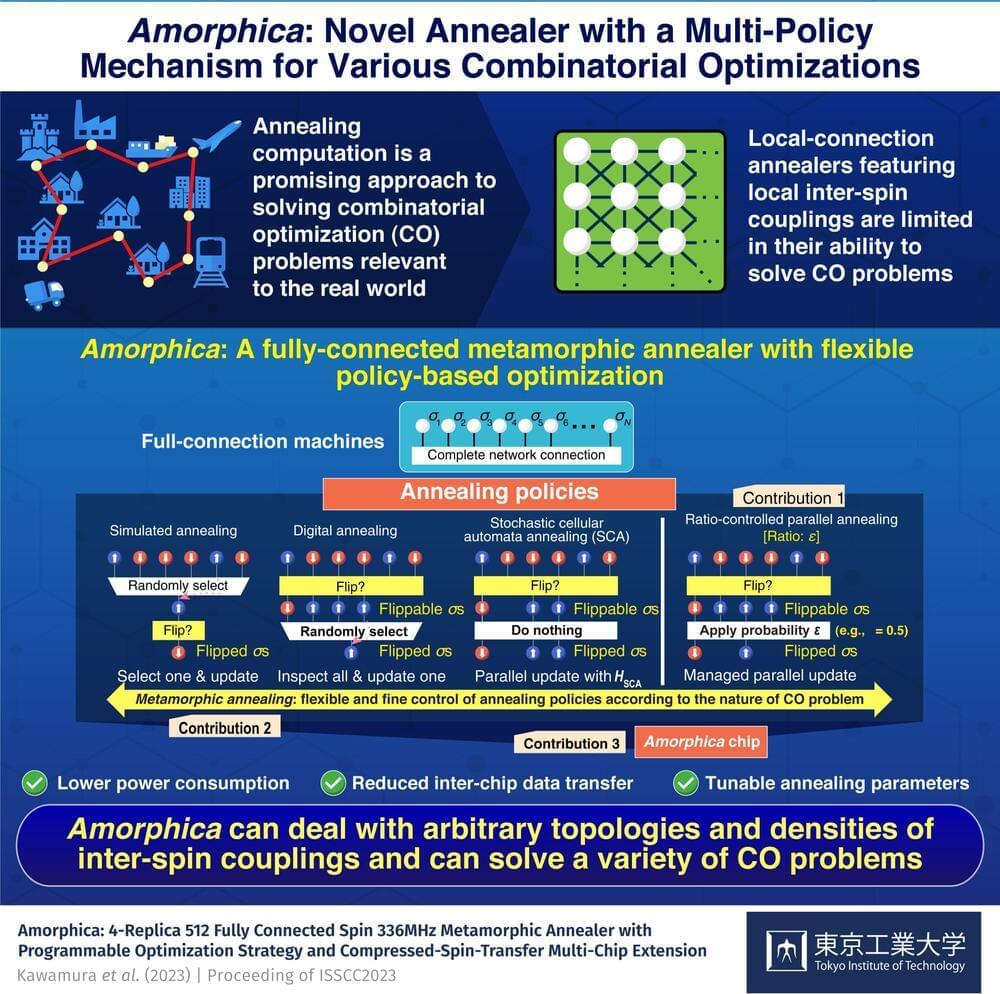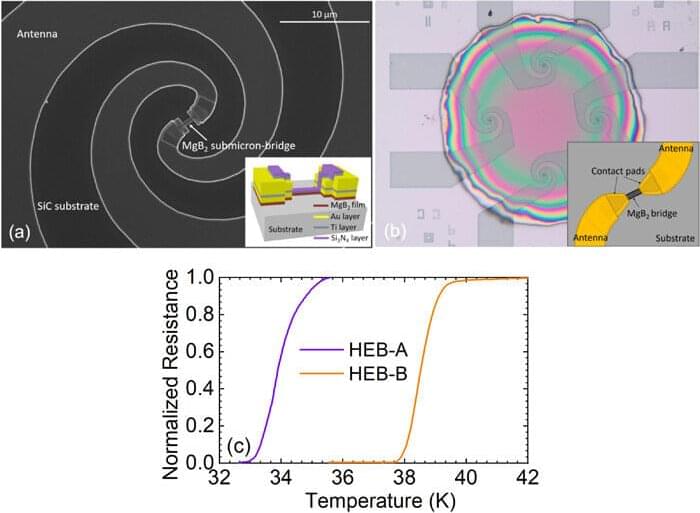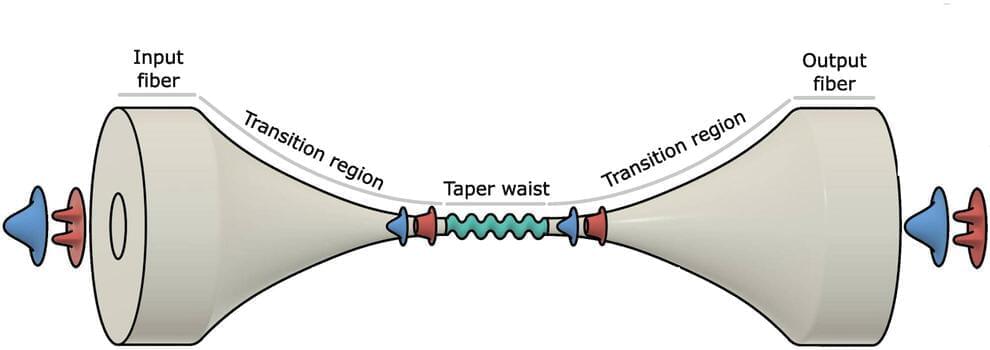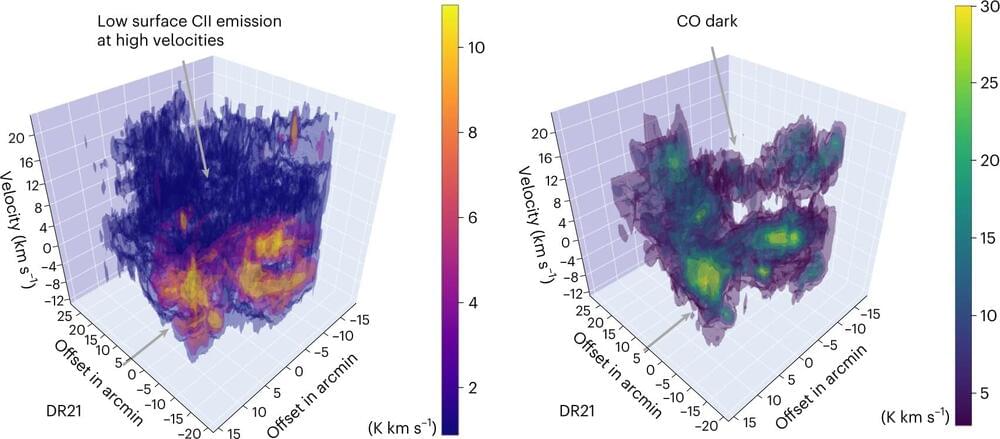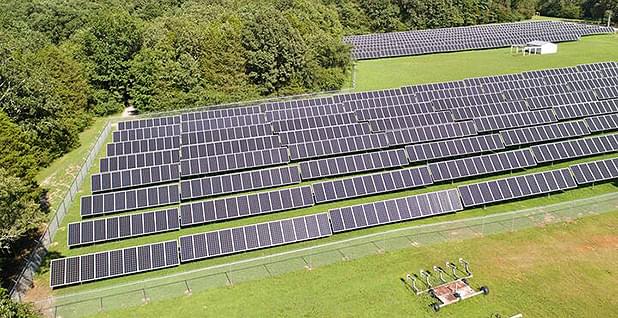Feb 18, 2023
New multi-policy-based annealer for solving real-world combinatorial optimization problems
Posted by Saúl Morales Rodriguéz in categories: finance, mathematics, policy, robotics/AI
A fully-connected annealer extendable to a multi-chip system and featuring a multi-policy mechanism has been designed by Tokyo Tech researchers to solve a broad class of combinatorial optimization (CO) problems relevant to real-world scenarios quickly and efficiently. Named Amorphica, the annealer has the ability to fine-tune parameters according to a specific target CO problem and has potential applications in logistics, finance, machine learning, and so on.
The modern world has grown accustomed to an efficient delivery of goods right at our doorsteps. But did you know that realizing such an efficiency requires solving a mathematical problem, namely what is the best possible route between all the destinations? Known as the “traveling salesman problem,” this belongs to a class of mathematical problems known as “combinatorial optimization” (CO) problems.
As the number of destinations increases, the number of possible routes grows exponentially, and a brute force method based on exhaustive search for the best route becomes impractical. Instead, an approach called “annealing computation” is adopted to find the best route quickly without an exhaustive search.
